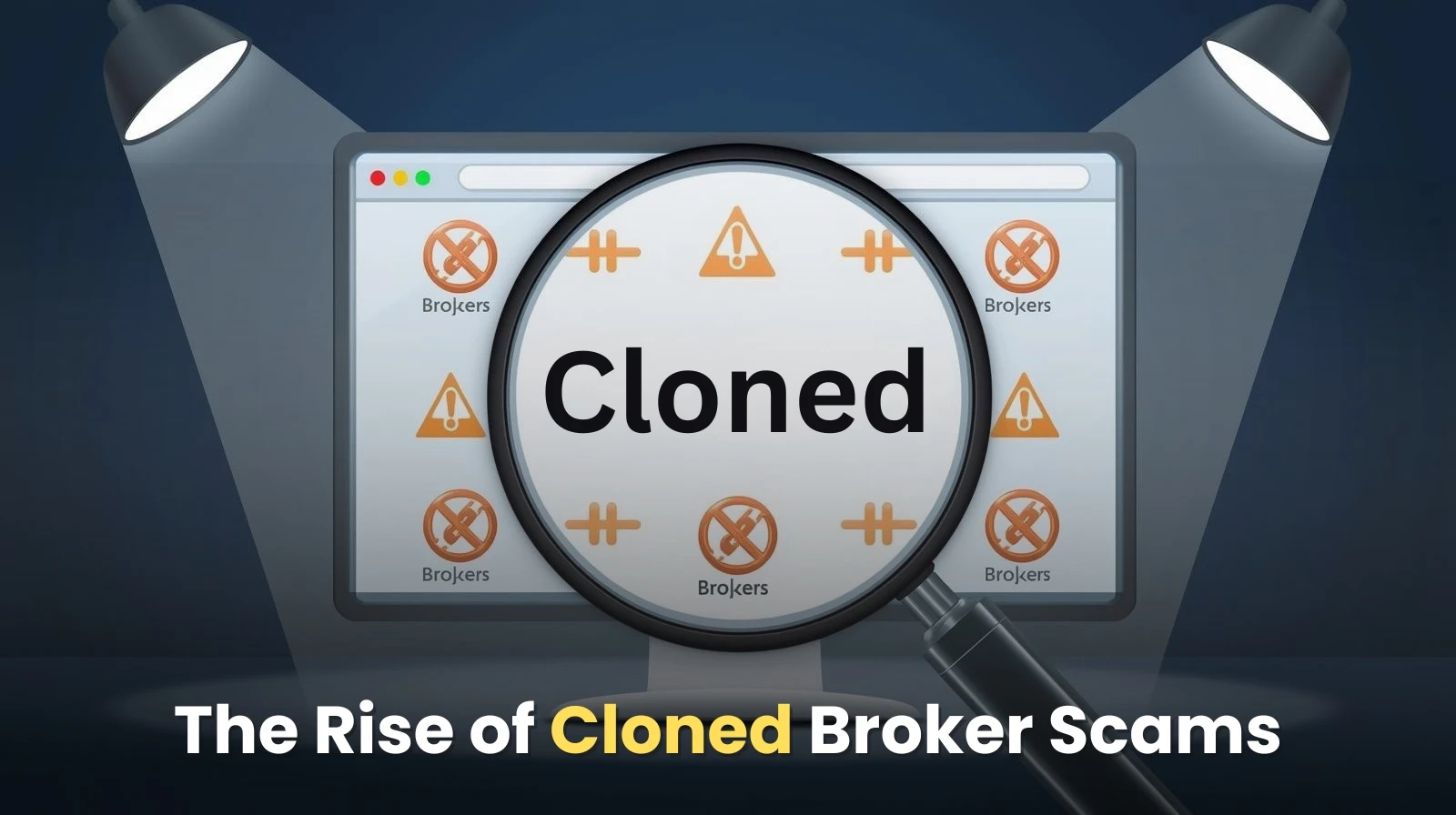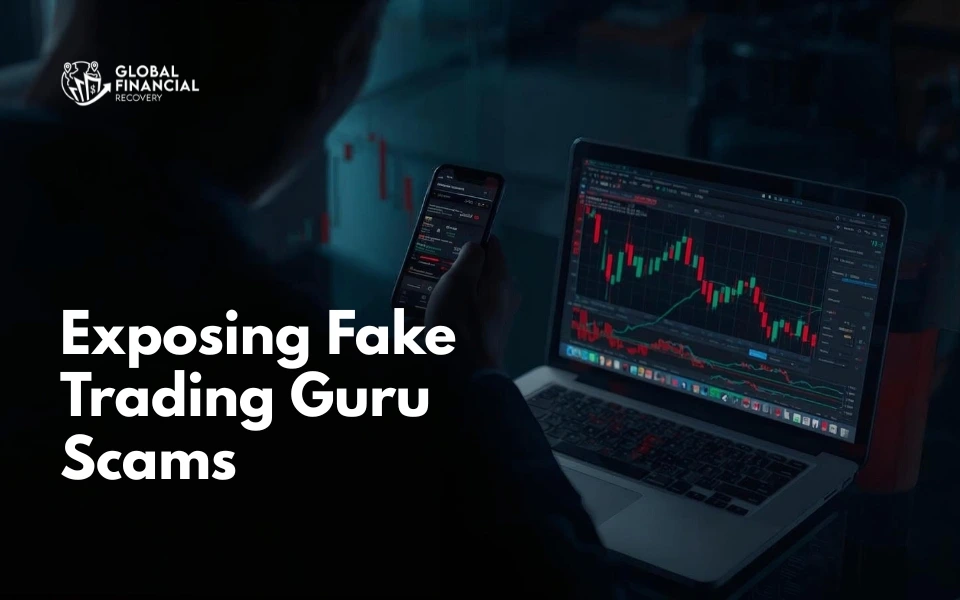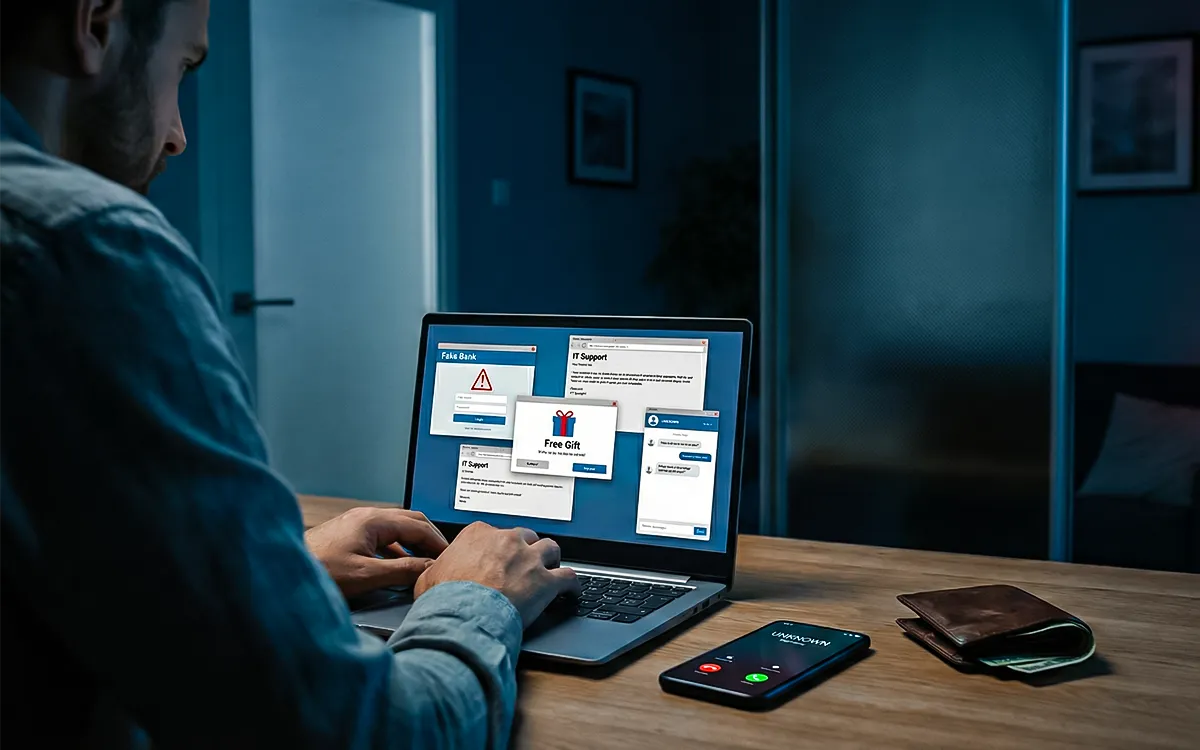
- Cryptocurrency
- September 23, 2025
Table of Contents
One minute you’re about to withdraw crypto, and the next, your wallet is frozen. When your crypto wallet freezes, you lose access to your funds. Whether it's a system error, a legal hold, or a scam, the result is the same: you can’t trade, withdraw, or transfer. For many, it’s more than frustrating; it’s a financial emergency.
You may have life savings stuck in that wallet. You may rely on those funds for rent, bills, or payroll. And worse, the platform support often goes silent or demands strange payments to unlock your account.
In this guide, we’ll help you understand exactly why wallets get frozen, how scammers are exploiting this trend, and what steps you can take to protect or recover your funds. We'll also break down the difference between legitimate compliance holds and suspicious lockouts designed to steal your money.
What is a Crypto Wallet Freeze?
A crypto wallet freeze happens when you’re suddenly locked out of your wallet and can't move or withdraw your funds. This can feel like your account is on hold. Sometimes, platforms freeze wallets due to security checks, compliance issues, or investigations.
But here’s the problem: scammers copy this exact situation.
They create fake crypto wallet platforms or hack into legit ones and pretend your wallet is frozen. Then they demand an “unlock tax” or “security charge” to release your money. These are crypto wallet freeze scams, and once you pay, your crypto is gone and your wallet stays locked.
How it affects users:
- Total loss of funds
- Emotional stress and confusion
- Constant pressure to pay more
- Identity or KYC data may be exposed
Why Crypto Wallets Get Frozen or Blocked?
A crypto wallet freeze means that suddenly you cannot access or transfer your funds. It's not just a problem with the technology; it could mean something much more serious.
There are legitimate reasons and illegitimate reasons, so understanding why your crypto wallet might have frozen or blocked is important if you want to be able to act promptly to save your funds.

1. Fake Compliance or Tax Scams
Scammers posing as recovery agents or officials claim that your wallet is frozen for “compliance,” “tax,” or “KYC” issues. They’ll demand a fee, often labeled as a “release” or “unlock” payment, to unfreeze your funds.
Example: A victim was told to pay a $2,000 “regulatory fee” to unfreeze their wallet — but the money and support vanished.
2. Phishing or Hacked Access
If you've unknowingly shared your wallet credentials or recovery phrase, attackers can lock you out completely. Some may pretend to “help,” only to take control of your wallet, initiate a freeze, and then extort you.
Example: After entering her recovery phrase on a fake site, she got locked out and was asked to pay $500 to “restore” access.
3. Platform Exit Scams or Rogue Exchanges
Some fake crypto platforms simply block withdrawals, make up reasons, and vanish with your money. Victims are told “the system is under maintenance” or “your account is under review,” while the platform quietly shuts down.
Sometimes, your wallet isn’t actually frozen by the platform; it’s a scammer faking it. These attackers often follow up by demanding fake charges to unlock your funds. Learn how these crypto withdrawal fee scams trick users into paying for nonexistent “release” or “compliance” fees.
How Do Frozen Crypto Wallet Scams Work?
When someone suddenly claims your crypto wallet is frozen, it can instantly cause panic, and that’s exactly what scammers are counting on. These scams are designed to trick you step by step, making you believe your funds are in danger when they’re trying to steal them. Here's how the scheme usually plays out:

Step 1: It Starts With a Sudden Warning
You get an unexpected message, email, or phone call. The person sounds professional and even urgent. They claim to be from your crypto exchange, said the blockchain security team, or some government agency.
They tell you there has been some suspicious activity and your wallet is frozen due to a "security breach," or "compliance check," or something sounding official. The idea is to catch the victim off guard and in a state of confusion, thereby making them take the warning more seriously.
Step 2: The Story Is Backed Up With Fake Proof
They try to convince you by showing you forged documents, screenshots of fake accounts, or phony reference IDs. Some fake websites or spoofed email addresses may be used to look legitimate. Now it seems that you are actually dealing with professionals. Many stop questioning and just begin to agree with the demands.
Step 3: Pressure Builds Through Urgency
Now the scammer increases the pressure. They tell you your funds will be permanently frozen, seized by authorities, or flagged unless you act fast. This urgency is intentional. It’s designed to make you feel anxious and stop you from verifying the facts or asking questions. People often act out of fear, and that’s exactly what the scammer wants.
Step 4: A “Solution” Is Offered, but It’s a Trap
Here’s the catch: they offer you a fix, which might include things like
- Paying a small “unlocking fee”
- Transferring your crypto to a temporary “safe wallet”
- Sharing your private key or recovery phrase
All of these are traps. Once you share sensitive info or move your assets, the scammer takes full control of your wallet.
Step 5: The Funds Disappear
Once you’ve done what they asked, your crypto is gone. The wallet is drained. The contact who guided you disappears. Phone numbers are disconnected, emails bounce back, and social media accounts vanish. Recovering the funds is nearly impossible, especially if they’ve already been moved across multiple wallets.
Step 6: A Follow-Up Scam May Appear
Some scammers are back. Days or weeks later, someone else may get in touch, this time as a recovery agent, lawyer, or law enforcement official, saying they can help. They will say they can recover your funds for a service fee. It’s just another scam targeting people who are looking for a solution.
These scams are built to manipulate your emotions (panic, fear, and hope). Real crypto platforms will never freeze wallets and ask you to pay them or give them access to your private key. Anyone who does this is a scammer. Always verify independently and never share sensitive details with unverified sources.
How to Identify a Frozen Crypto Wallet Scam?
Crypto wallet scams work by creating urgency and false trust. A sudden notice that your wallet is frozen can cause confusion and fear, making you vulnerable. Knowing these alerts are often fake lets you avoid hasty actions.
In addition, scammers insist you act quickly to prevent losing funds. This rush is meant to overwhelm your judgment, but staying calm helps you double-check the situation. They may ask you to send your crypto to a “safe” wallet, which actually hands control to the scammer. Recognizing this keeps your funds secure.
However, demands for fees or private information like private keys are common in these scams, yet no legitimate service requests this. Being aware protects your assets and personal data. Fake legal papers and cloned websites build a false sense of legitimacy. By carefully verifying sources and URLs, you can avoid falling for these fakes.
In fact, some scammers later pose as recovery agents, asking for more money. Knowing this prevents further victimization. Always confirm any wallet problems by contacting your wallet provider directly using trusted websites or apps.
5 Common Crypto Frozen Wallet Scams
Many people find their crypto wallet frozen after unknowingly falling into a scam. Below is a breakdown of the most common types, how they work, and what typically happens.
|
Scam Type |
How It Works |
How They Freeze Your Wallet |
What Victims Experience |
|
1. Investment Scams (Pig Butchering) |
A scammer builds trust via social media or dating apps and convinces the victim to invest in a fake crypto platform. |
When the victim tries to withdraw, they’re told the wallet is frozen due to fake “fees” or “taxes.” |
Complete loss of investment, deep emotional betrayal, and often fake documents are shown. |
|
2. Phishing Scams |
Victims receive emails or messages pretending to be from crypto companies or government agencies. |
Clicking the link leads to a fake login page where private wallet info is stolen. |
Funds are drained or access is “locked” with demands for more crypto to unfreeze it. |
|
3. Fake Trading Platforms |
Scammers create professional-looking fake exchanges that offer big returns. |
Victims are allowed small withdrawals at first, then face a fake “wallet freeze” during larger transactions. |
Total crypto loss; often shocked by how real the platform looked. |
|
4. Impersonation Scams |
Scammers pose as government officials, company reps, or even celebrities promoting crypto offers. |
Victims send crypto or access it through a fake site, after which their funds are frozen. |
Loss of crypto under pressure, fear-based manipulation, and repeated demands. |
|
5. Recovery Scams |
Scammers target people who have already lost funds and promise crypto recovery for a fee. |
After payment, victims are told their “recovered funds” are frozen and need more money to release. |
Additional losses, feelings of hopelessness, and betrayal by a fake helper. |
If You’ve Seen a “Crypto Wallet Freezing Order,” Be Cautious. Most of these documents are fake and designed to scare you into paying. Never send more crypto without verifying with a legitimate recovery expert. Most of these scams happen because people unknowingly use unsafe platforms. Stay protected by reading our blog onhow to choose a secure crypto wallet.
What to Do If Your Crypto Wallet Is Frozen?
Finding your crypto wallet frozen can be overwhelming. Whether it’s due to a scam, a security hold, or a regulatory freeze, taking the right steps quickly is essential to protect your funds and recover access.
A: Immediate Actions When Your Wallet Is Frozen
- Stop any payments immediately
Be cautious of anyone claiming to be a support representative asking for payment to unlock your wallet. Legitimate exchanges and wallets do not charge fees to unfreeze accounts. - Document everything
Save screenshots of freeze messages, emails, and chats. This evidence is important for reporting fraud or working with recovery specialists. - Verify your account status on official platforms only
Always log in through the official website or app. Avoid clicking on links from emails or messages to prevent phishing. - Scan your device for malware
If you clicked on suspicious links, run antivirus and anti-malware scans to protect your data and wallet security. - Report suspicious activity
Contact your wallet or exchange’s verified customer support immediately. If you believe you’re a victim of fraud, report it to the Federal Trade Commission (FTC) or Internet Crime Complaint Center (IC3). - Consider professional recovery assistance
If funds are missing or access is blocked, crypto recovery experts can help trace and recover lost assets.
B: How to Unfreeze Your Crypto Wallet Safely?
If your crypto wallet is frozen for a valid reason, don’t panic. Here’s what you can do:
- Contact the exchange or wallet support team through their official website or app, not through emails or unknown links.
- Be ready to provide documents for identity and regulatory checks (KYC/AML), if asked.
- Reset your account password and note it down for better protection.
- Be patient. Some freezes are temporary but may take a few days to clear, depending on the issue.
- If the freeze is related to legal action, get legal help from someone who knows crypto regulations.
How to Avoid a Crypto Wallet Freeze Scam?
Crypto scams are evolving, and one of the scariest tricks is the “wallet freeze,” when fraudsters lock you out of your funds and demand payments to release them. But don’t worry; there are simple ways to stay one step ahead.

- Use only trusted crypto wallets and exchanges
Scammers often create fake apps or websites that look like real platforms. Before opening an account, check if the exchange is well-reviewed, regulated, and widely used. Coinbase, Kraken, and Binance US are examples of platforms with stronger reputations.
- Turn on two-factor authentication (2FA)
2FA adds a second layer of protection beyond your password. Even if someone guesses your login details, they can’t access your wallet without a code from your phone or authenticator app.
- Never share your recovery phrase or private keys
Your private key is the master key to your funds. No company, exchange, or support agent will ever need it. If someone asks, even in a panic message, it’s a scam.
- Avoid clicking links from texts, DMs, or emails
A common scam tactic involves sending you a fake alert saying your crypto wallet is frozen or your account is under threat. And the messages often are links containing dangerous phishing websites. It is always better to go to the wallet app or type the website URL directly in the search bar.
- Don’t act on urgency
Scammers love to create panic. Messages like “Withdraw now or lose your funds!” or “Your account is blocked, act fast!” are meant to trick you. Real crypto services won’t pressure you over social media or random emails.
- Stay alert to any suspicious signs
Have you been promised high returns, pushed into “exclusive investment groups,” or told your wallet has “regulation issues”? These are major red flags. Most of them end in a fake freeze and a demand for money to "unlock" your funds.
Simple rule: The more urgent or emotional the message feels, the more cautious you should be.
Take Back Control of Your Crypto Wallet
Now that you understand how to take control. Understanding how scammers use fake crypto wallet frozen warnings gives you the tools to stop them in their tracks or recover if they have already gotten to you.
With this knowledge, you’re better equipped to:
- Spot fake alerts and phishing attempts before they lead to a crypto wallet block
- Take real action to unfreeze cryptocurrency accounts safely (if needed)
- Strengthen your crypto wallet security to reduce future risks
- Avoid panic-driven decisions that scammers count on
By understanding how to avoid crypto wallet freeze scams and knowing how to respond, you are taking back control. If you have been scammed or are unsure about what to do, Global Financial Recovery can help you put together a clear understanding of what happened, review your case with you, and explain your possible options for recovering your funds with expert assistance every step along the way.
FAQs (Frequently Asked Questions)
No. They stay offline, so scammers can't freeze them. But if you share your recovery phrase, your wallet can still be hacked. Never share it.
Your crypto could be stuck or lost. Most exchanges aren’t insured. Getting your money back is hard and slow. Don’t keep everything in one place. Use secure wallets.
Your wallet can't be directly frozen, but the DeFi project might pause itself for updates or security. Also, any company you use to move money into DeFi can still freeze those funds.
Yes, in a way. If you lose your private key or secret recovery phrase for a self-custody wallet (like MetaMask or Exodus), your funds freeze permanently. There's no "unfreeze" button, no support team to help you. It's like losing the key to a safe; the money is still there, but you can't get to it. This is why crypto wallet security stresses keeping these safe.
Yes. If you have crypto on an exchange account you haven't used in a long time, the exchange might freeze funds in it for security, legal checks, or due to "dormancy" rules. They often need you to update your identity (KYC) to access it again.





